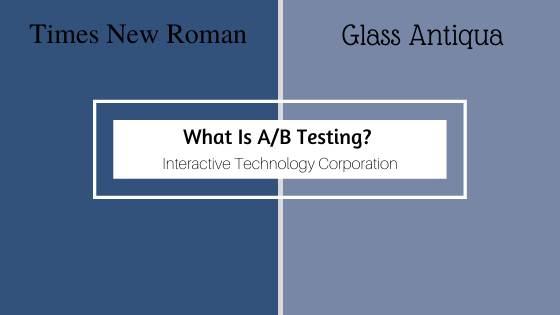Introduction
When creating digital assets such as email copy, social media posts, website landing pages, and display ads, marketers don’t just rely on what they think looks good. They often create two different versions to try them out on consumers to see which one receives the better response. This type of testing, where half of the audience receives version A and the other half receives version B, is called A/B testing or “split testing.”
How It’s Done
Tools like A/B testing allow businesses to make the most of their marketing budget. Rather than blindly choosing an ad to run and sinking the entire budget into that ad, marketers can use A/B testing to determine which version of the ad converts better. It’s much easier to justify spending more money on the one that has a higher conversion rate.
You can even test more than one variable at a time. If you wanted to know which font and background color of your landing page will convert best, you can create four versions of the landing page. The four variations would look something like this:
- Times New Roman with Light Blue Background
- Times New Roman with Light Green Background
- Calibri with Light Blue Background
- Calibri with Light Green Background
All other things being equal, looking at the conversion rates for each variation would help determine the best return on investment.
What Can Be Tested
While pretty much any aspect of your marketing materials can be tested using A/B testing, that doesn’t necessarily mean you should spend time testing every little detail. It’s best to focus on the details that are likely to have the most significant impact.
For almost all businesses, their website is going to be a significant online property. Companies tend to invest a good deal of money in website design, so it’s important for them to ensure they’re getting the biggest bang for their buck. Items that are commonly A/B tested on a website include things like the call to action, headline, product descriptions, graphics, and sales copy.
Conclusion
Though A/B testing can take time to do properly, it is often well worth the investment to get accurate data. Knowing what works best and having evidence to back it up can make decision making easier. A/B testing can also have a positive impact on the bottom line.

